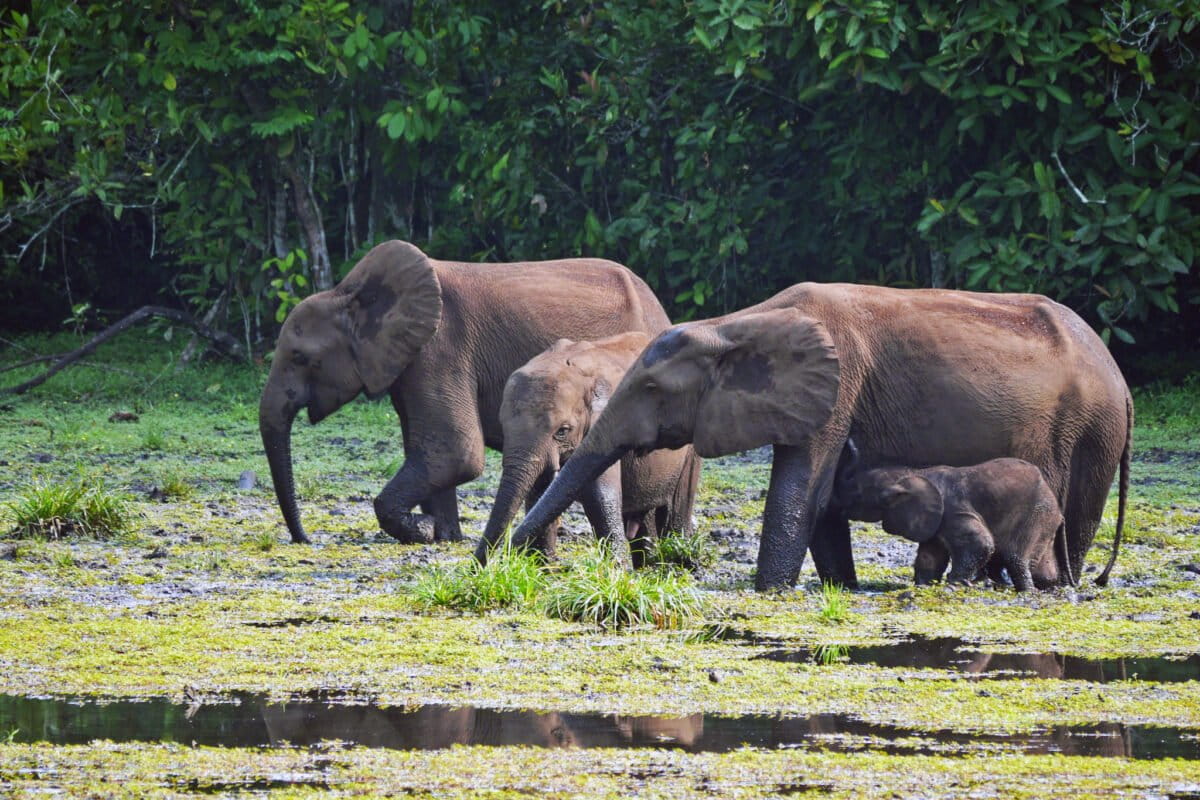- A 50-year-old farmer, Yaya Musa, popularly known as Kala, was attacked and killed by an elephant in the Itasin-Imobi community, in Nigeria’s Ogun state, in late July.
- Villagers say they live in constant fear of elephant attacks, with two previous incidents reported in recent years, including an assault on Badmus Kazeem, a chainsaw operator in 2024, who spent seven months in the hospital recovering from injuries.
- The Ogun state commissioner for forestry reportedly says the incident occurred in a designated wildlife area, but community members reject this claim, insisting their ancestral lands predate the elephant reserve and that their livelihoods depend on farming and fishing in the area.
When the going gets tough, the tough get going — but for people in the Itasin-Imobi community, the going has been tough for far too long.
Situated in the midst of Ogun state, Nigeria, this quiet fishing and agrarian community has been facing challenges that have tested its resilience to the limit.
On Monday, July 28, 2025, a tragedy shattered the peace and tranquility that residents were accustomed to. A 50-year-old farmer, Yaya Musa, popularly known as Kala, whose life was intricately woven with the land and the rhythms of nature, met a gruesome death at the hands — or rather, the tusks — of elephants that had strayed from their natural habitat nearby.
As one approaches Itasin-Imobi, the landscape unfolds into a vast expanse of mixed farmland, dominated by thriving banana and cassava plantations that stretch as far as the eye can see, with a narrow, rugged road meandering through the midst, flanked by tracts of cultivated land.
The air is alive with the sweet scent of ripening crops and the gentle hum of insects, a symphony that has served as the soundtrack to villagers’ lives for generations. However, the journey to this idyllic setting is a test of endurance. The roads that lead to the community, marred by potholes and construction delays, wind through the landscape like a serpent, slowing down the pace of life and making every trip a calculated risk.
The 66.5-kilometer (41-mile) stretch from Ijebu Ode, a popular town in the region, normally takes about an hour and a half to traverse. Yet, on a day beset by rain, the faithful companion of the farmer and the fisher, the journey can stretch to more than two and a half hours. The rain, which falls from the sky like a relentless curtain, turns roads into quagmires, testing the resolve of even the most determined traveler.
As we finally arrive in Itasin-Imobi, the sense of community is palpable. Children, their faces smeared with dirt, swim in the river, their laughter and shouts carrying on the wind as they splash in the water. They wave at us with big smiles, their eyes sparkling. Others, with bare feet and worn clothing, embody a carefree spirit, playing together in the hot weather. Some run around without a stitch of clothing, while others wear tattered shorts and tops made from Ankara clothing.

In contrast, the adults proudly wear traditional Ijebu attire, showcasing the rich cultural heritage of the Yoruba people in this region. Women wear elegant Iro and Buba, while men in Dansiki shirts paired with sokoto and fila caps.
The villagers greet each other with warmth and familiarity even though they are still in a sober state, mourning Kala’s death, and the fear of going to the farm lingers. This fear is rooted in a history of encounters with elephants, with many villagers having learned to flee at the mere sight of one.
Here, the elephants, once a symbol of wonder in the community, have become harbingers of doom for villagers. A shift in perception started abruptly after a fateful encounter in 2023, when a village member was seriously injured by an elephant that used its trunk to attack, leaving him with severe leg and chest wounds. Since then, the threat the animals pose is not just to crops and livestock, but to the very way of life that the people of Itasin-Imobi have known for generations.
Although, the community’s struggles are not limited to the threat of elephants. Itasin-Imobi, like many other communities in the area, is beset by developmental challenges that make life a daily struggle. A lack of electricity, which has plagued the community for more than 14 years, is a constant reminder of the neglect and marginalization that rural communities face.
A source, who speaks on condition of anonymity, reveals that the community’s electricity last functioned during the tenure of former Ogun State Governor Gbenga Daniel, who left office in 2011; despite the breakdown since then, the subsequent government has not restored it.
The loss of Kala’s life also shows the systemic failures that plague rural health care. The nearest health center in Tonigbo is woefully underequipped, lacking essential medicines and a functional emergency operation room. This, coupled with the crippling lack of transportation options due to the village’s poorly maintained roads, created a perfect storm that ultimately proved fatal.
“We couldn’t rush Kala to the hospital because transportation is a major challenge in our village,” Rasheed Kazeem, a community leader, explains to Mongabay via phone. He adds that the Tonigbo health center “lacks adequate facilities and equipment to handle emergencies. … Even if we managed to find a way to transport Kala to Tonigbo, the health center wouldn’t have been equipped to save him at that critical point.”
Despite these challenges, the people of Itasin-Imobi are resilient. Farming and fishing are not just economic activities but a way of life. Even the youngest members of the community, some as young as 9 years old, are already learning the skills that will sustain them in adulthood.
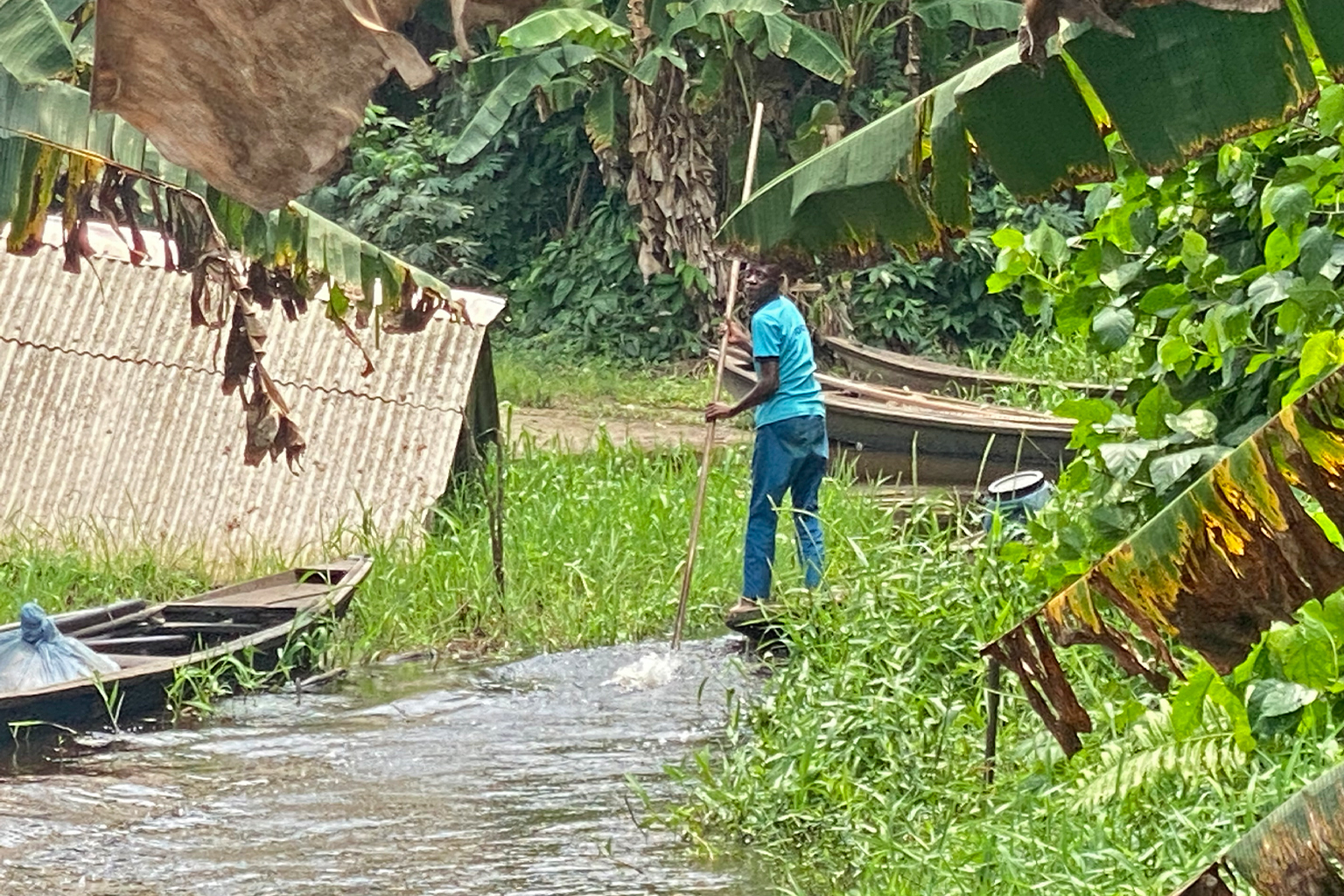
A trail of events
The threat of elephants, however, has cast a long shadow over the community’s efforts to build a better life. The villagers can no longer farm or fish with the freedom they once had. Everything changed after a string of attacks, with many farmers reporting that the elephants have been aggressively chasing them off their farmland, leaving them traumatized and uncertain about their livelihoods. The poverty that has gripped the community has deepened.
The first elephant in recent times was spotted in the community on April 6, 2018, according to a villager named Aliyu, who speaks to Mongabay. According to community leader Rasheed Adekunle, speaking on behalf of Chief Adedoyin Mujaidu Ajayi, elephants had attacked two villagers before the fatal attack on Kala in July. He says, “According to local history, this isn’t the first time elephants have visited the village. In fact, it’s been happening for centuries. About seven years ago, they reappeared, and when farmers alerted us to the marauding elephants, we chased after them. We counted 17 in total, but they fled when they saw us, eventually settling near the river.”
Bello Adekunle, who survived an attack by elephants in 2023, recounts how his partner escaped, leaving him at the mercy of an enraged elephant on the farm.
“As we were going to farm, I saw something unusual in front and warned my partner to come quickly. But before I could react, an elephant appeared, and I tried to flee. My torchlight dropped, and I couldn’t run far. I took cover behind a tree, but the elephant attacked, using its tusk to gore me in the leg and chest. Miraculously, I survived the ordeal, though I’m still grappling with the aftermath of the brutal attack,” Bello narrates.
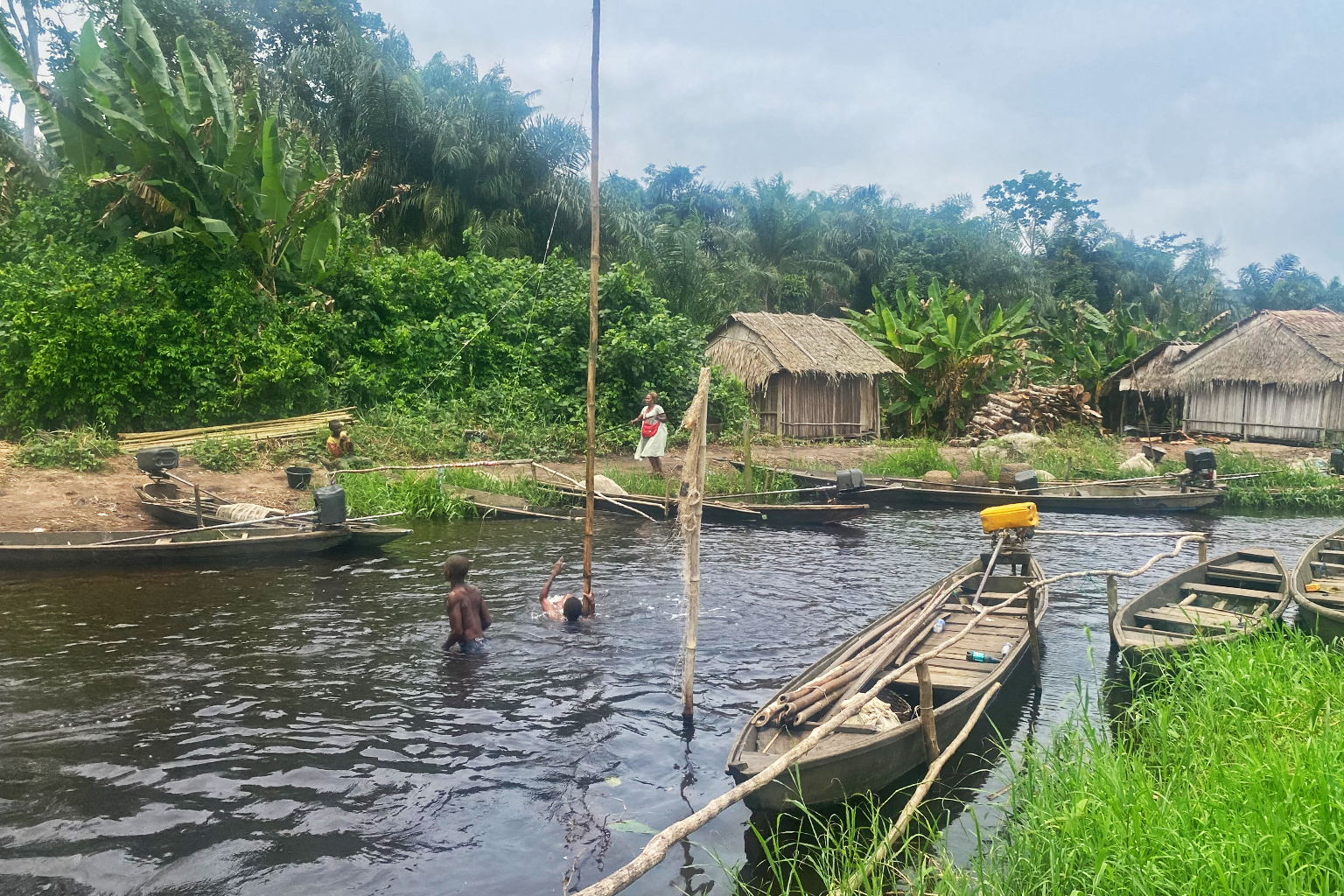
Badmus Kazeem, a chainsaw operator, also shares his harrowing encounter with Mongabay, detailing the assault he suffered at the hands of four rampaging elephants in 2024. “I was just going about my daily routine, working on the farm with two others, when suddenly, four elephants emerged out of nowhere and surrounded us.
“We were caught off-guard, and in the chaos, two of my companions managed to escape, but I was trapped in the midst of four elephants. The elephants attacked me, and I was severely injured by their tusks. One of the tusks pierced my leg and came out the other side, and I also sustained injuries to my stomach. In a desperate bid to survive, I pretended to be dead, and miraculously, the elephants left me alone and walked away. I was left lying there, injured and helpless, but grateful to have escaped with my life,” Kazeem says.
Following the incident, Kazeem notes that he was rushed to the General Hospital in Ijebu Ode, approximately an hour and 50 minutes (73 km or 45 mi) from the village. After receiving initial treatment and stabilization, he was referred to another hospital for further care. “I spent a grueling seven months on the sickbed, undergoing a long and arduous recovery process,” he says.
“The community rallied around me, raising 500,000 naira [about $325] to cover the initial deposit for my treatment, which was a huge relief. However, the expenses didn’t stop there, and I had to rely on others to help with the ongoing costs. Even now, I’m still struggling to regain my strength and haven’t been able to return to work. I continue to visit the hospital for regular checkups, a constant reminder of the long road to recovery that lies ahead,” he says.
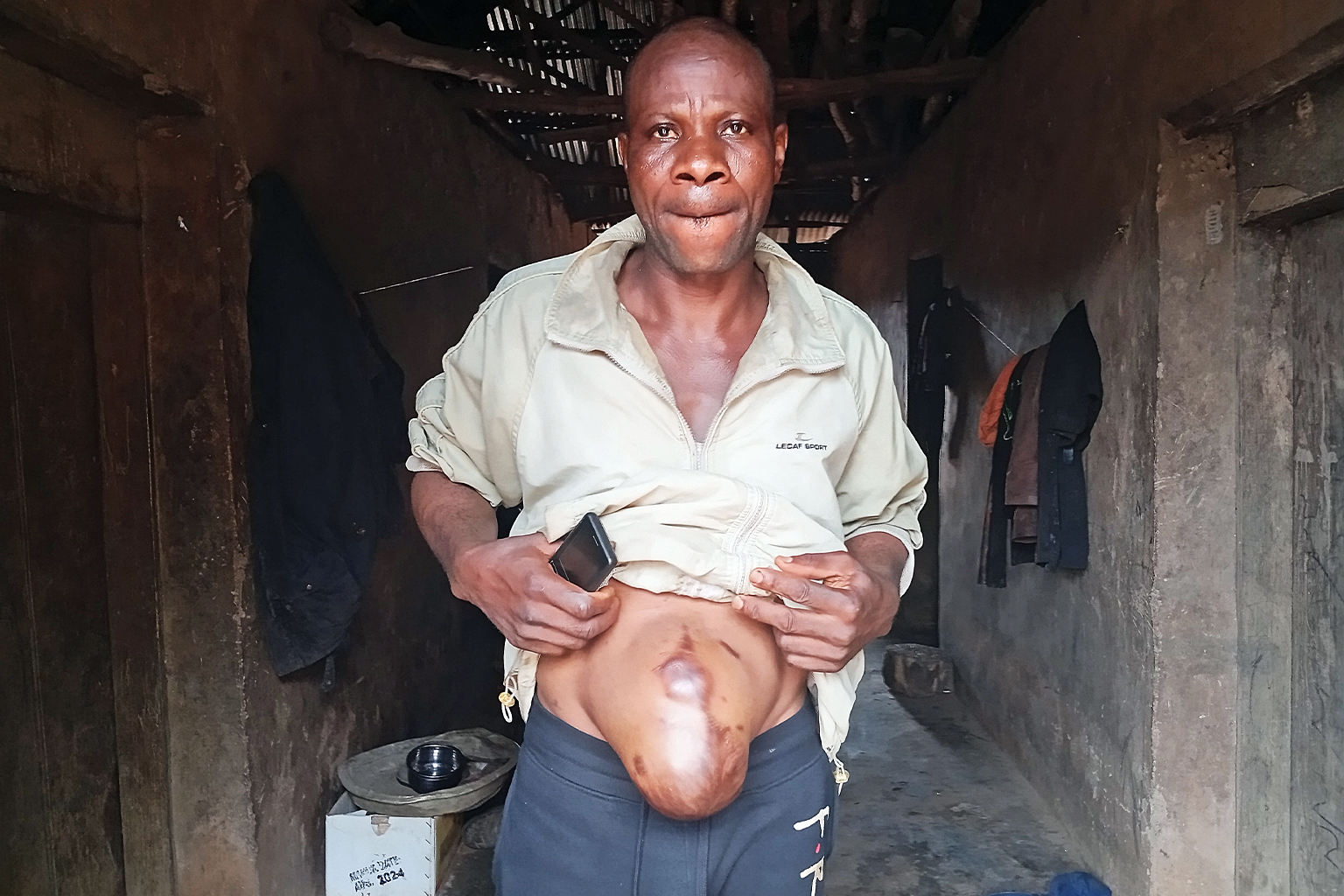
Death of Kala
It’s been eight days since that fateful day when Kala was killed, and as people gather at his residence to mark his remembrance, the atmosphere is heavy with grief. The air is thick with sorrow, and people’s eyes are cast down in a sober mood. Kala’s wife sits amid the mourners, her eyes red and puffy from crying, tears streaming down her face as she struggles to come to terms with the loss of her beloved husband.
In an interview with Mongabay, Kala’s 17-year-old son, who witnessed the tragedy firsthand, describes the terrible event.
“We hadn’t noticed any signs of the elephants,” he begins, his voice shaking with emotion. “After a long walk from home to the farm, we decided to take a short rest on a tree. As soon as we jumped down to start our daily farming, the elephant suddenly appeared. Everyone in the farm ran for their lives, including me, leaving my father behind.”
The teenager’s eyes well up with tears as he continues to speak. “I ran to inform some people that the elephant had appeared and my father was still in the farm. They followed me back, shouting my father’s name. We heard his voice responding weakly, saying ‘I am here, I can’t stand up, the elephant has brutally injured me.’ When we traced the voice, we found my father lying on the floor, his intestine spilling out of his stomach, which the elephant had torn open with its tusk. We quickly tried to cover the intestine with a cloth and carried him home,” he says.
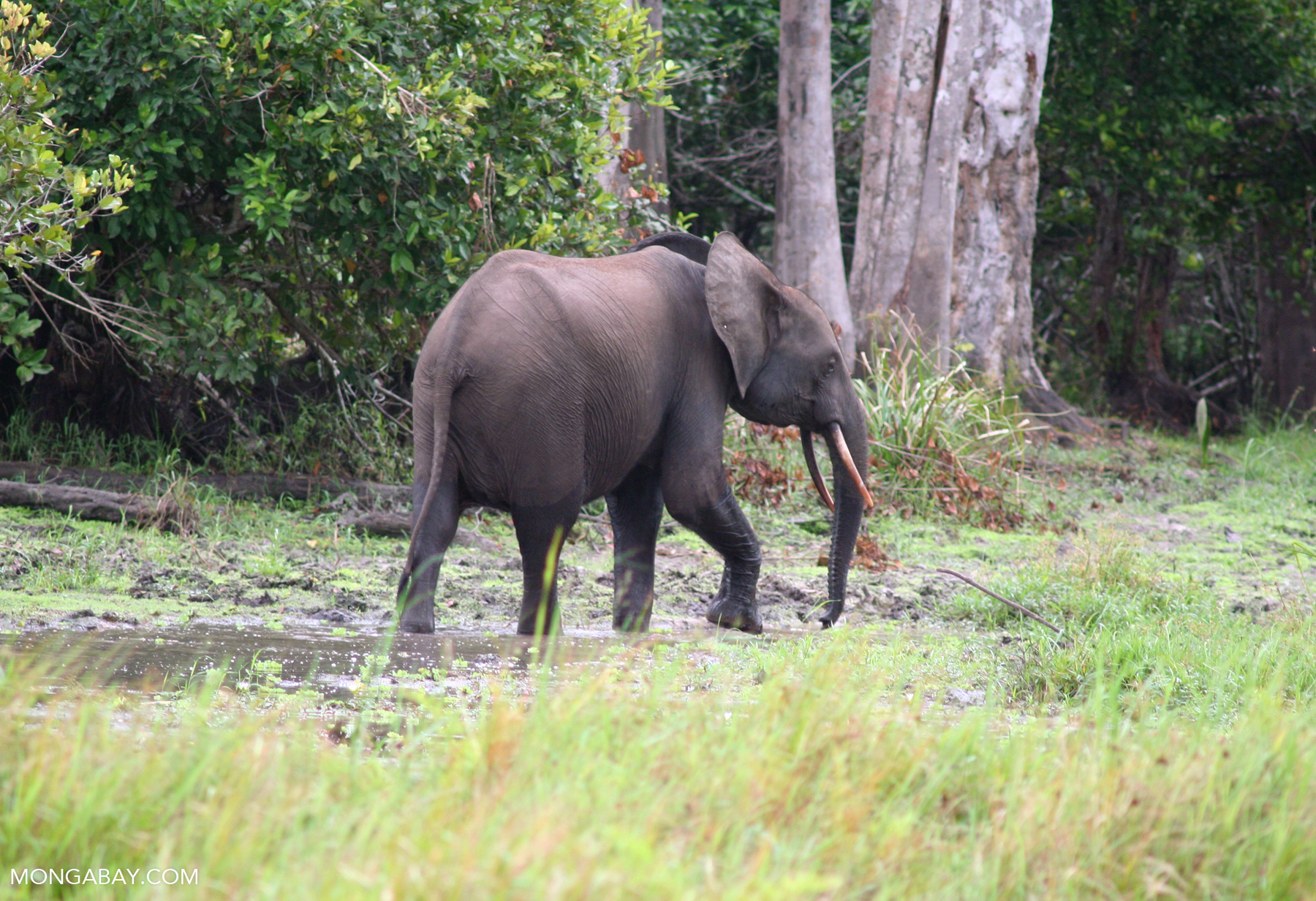
Government intervention
According to multiple local reports, including in EnviroNews, Oludotun Taiwo, forestry commissioner for Ogun state, said the incident occurred in a designated wildlife area, where community members frequently ignore government advisories and venture too close, and that the government had demarcated the area for a wildlife park.
However, the community members have rejected the commissioner’s claims, saying there is nothing like demarcation on their land, arguing that their ancestral lands predate any elephant reserve. They insist that their livelihoods depend on farming and fishing, and that government intervention to take the forest away from them will deprive them of their traditional means of survival.
“The government’s claims are a complete fabrication. They’ve never conducted demarcation efforts here, and we certainly didn’t encroach on their habitat. Instead, the elephants seem to have migrated from the Omo Forest Reserve into our community and farmland. Our community has existed for centuries without any issues with elephants until recent years,” says Rasheed Adekunle.
Kazeem Rasheed also expresses skepticism about the government’s claim, saying, “That place is not a forest reserve.”
According to him, while the community lacks documentation to prove ownership, historical facts support their claim. “Itasin has been existing for centuries, about 800 years, even before the coming of the Catholic people,” he states.
The community’s primary concern is that elephants are threatening their livelihoods, with Rasheed Adekunle noting, “The community view about the elephant is fear of taking our trade (farming and fishing) from us.”
Rasheed Adekunle explains that the elephants migrated into the forest around 2018, and their presence has disrupted the community’s traditional farming and fishing practices. The community is worried about their safety and wants the government to take action “so that our people can go back to farming with no fear of death,” he says.
He confirms to Mongabay via phone call that government officials visited Imobi in 2024, informing the Adele-Oba of Itasin-Imobi, Chief Adedoyin Mujaidu Ajayi, that the forest is now a reserve. But community members question the officials, asking when their forest and farms were turned into a reserve without prior notification, without consultation. They argue that the government couldn’t simply declare the area a reserve without taking steps to barricade the forest or providing alternative livelihoods.

Mongabay’s on-the-ground investigation includes a forest visit that reveals no visible boundaries or markers in the forest, contradicting the commissioner’s claims. The reporter observes elephant footprints, copious amounts of feces and extensive and devastating damage to farmland — and community livelihoods.
In a press release made available to Mongabay, signed by Sanariu Abimbola, the general secretary of a community group called the Imobi Elites Forum, the group disputes the Ogun state commissioner’s claims, asserting that the area is not a designated wildlife reserve and accusing the commissioner of confusing their community with the Omo Forest Reserve.
“Itasin is not a forest reserve, it is an ancient community where residents have always done their farming and other legitimate business,” Sanariu Abimbola states.
Mongabay reached out to Ogun state’s commissioner for tourism and culture, Sesan Fagbayi, via phone call to confirm local rumors that the government plans to develop Oko-Itasin (Itasin-Imobi forest) into a tourist center.
He says, “Regarding the idea of turning the Itasin forest into a tourist attraction due to the presence of elephants, I don’t have any information or knowledge about such plans. From what I know, the area is referred to as the ‘Elephant Forest’ under the Ogun State Ministry of Forestry, but I haven’t personally visited the site, and we haven’t explored any tourism initiatives there.”
He continues, “The proposal to develop the area as a tourist site hasn’t been presented to me. If the government decides to pursue this, several things would need to be done, considering it should be a conservation area that requires careful management, not just an open forest. As for the incident, I’m not aware of the details. Currently, the site falls under the Ministry of Forestry.”
When asked if the tourism ministry could consider turning the place into a tourist attraction, he replies, “Why not? There’s nothing wrong with the idea of developing it as a tourist site. However, as of now, this hasn’t been brought to my attention, and the Ministry of Forestry is fully in charge of the site.”
However, despite multiple efforts, Mongabay was unable to reach the Ogun state commissioners for forestry, via email and phone calls.

Finding middle ground: A call to action
Speaking to Mongabay in an interview, when questioned about the elephants’ aggression toward villagers, Onafowonkan Olayinka Kehinde, a wildlife expert from Lagos State University, says elephants are generally good-natured, but past experience could affect their behavior.
He says, “Elephants are very friendly animals; the elephant’s aggressive behavior might be attributed to past trauma, such as being attacked or witnessing a companion being harmed or killed by villagers, triggering a revenge response that elephants are known to hold onto. They barely forget things and they recognize faces faster than humans.”
He adds, “Regarding conservation efforts for these majestic creatures, it’s imperative that the government initiates a comprehensive dialogue with the villagers to establish a protected conservation park, not just for the elephants, but for the entire ecosystem.”
He further adds in a voice message, “The situation has become increasingly complex due to the elephants’ growing awareness of their vulnerability, which has led them to become extremely aggressive and attack humans on sight, making any conservation effort a daunting task.”
Inaoyom Imong, Wildlife Conservation Society (WCS) Nigeria country director, tells Mongabay in an email about the need for a strategic approach when asked about balancing wildlife conservation efforts in Itasin-Imobi. “Efforts to conserve wildlife in human-elephant conflict areas must adopt strategies that protect both humans and elephants. This can be achieved by reducing negative interactions between humans and elephants through creating awareness, promoting elephant deterrent farming practices, supporting habitat management, and promoting community-based initiatives.
“Elephants are not naturally aggressive towards humans,” Imong says. “However, they can become aggressive when they feel threatened by poachers or stressed by other interactions with humans. Reducing these sources of threat to elephants will reduce their aggressive behavior towards humans.”

Eco-tourism can be a viable option, he says, if done well. “Eco-tourism has great potential to build trust and strong community interest and support for conservation. Economic benefits from eco-tourism can incentivize communities to protect elephants and their habitat, facilitating peaceful coexistence between humans and elephants.”
He advises, “The government and the people need to work together to find ways to sustainably manage the forest reserve to benefit both people and elephants. Involvement of the local communities in the planning and implementation of conservation strategies is crucial to ensure that the interests of the people are taken into consideration.”
Banner image: A herd of forest elephants. Image by Matt Muir via Wikimedia Commons (CC BY 4.0).
